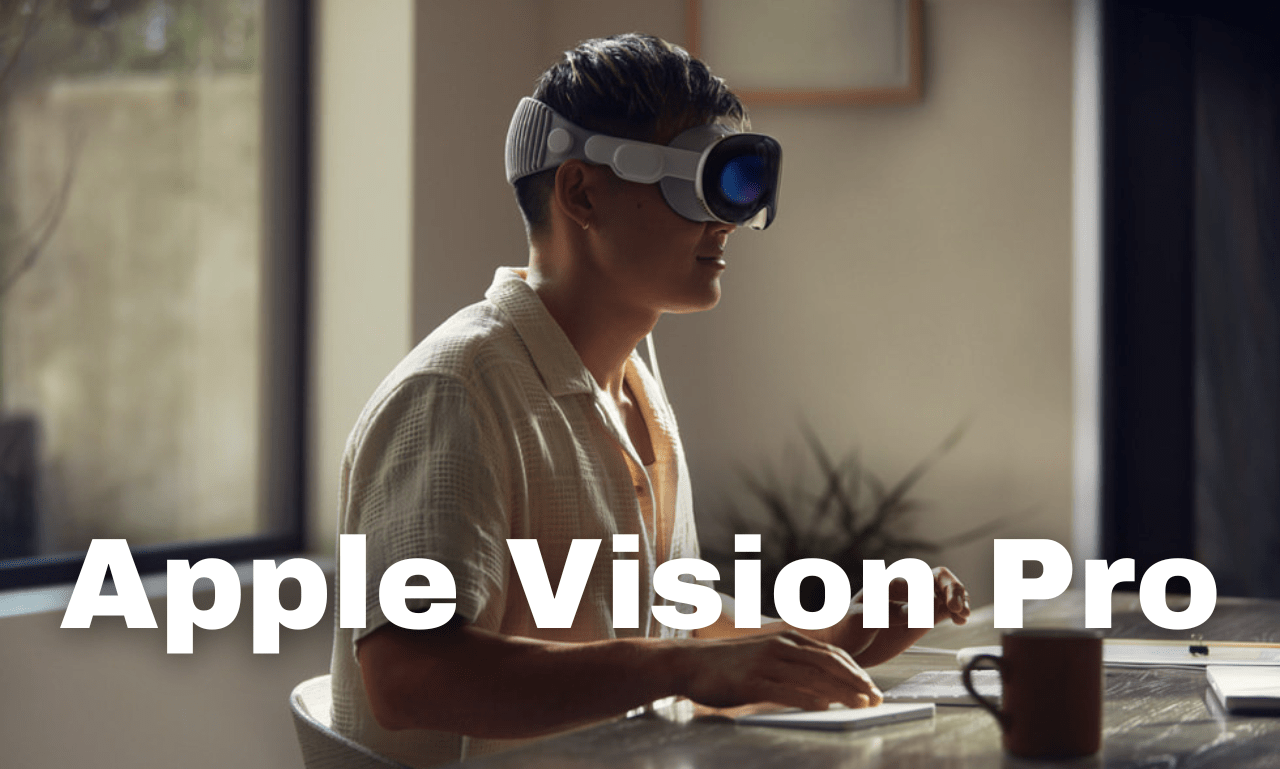Apple unveiled the Apple Vision Pro, its first-ever VR headset (or “spatial computer,” as the company prefers), in early June. It essentially acts as a wearable MacBook. Unlike its counterparts, such as the Meta Quest 3, which has gained popularity among gamers, Apple’s VR approach emphasizes on efficiency and communication rather than amusement. It’s a powerful wearable that allows you to connect to entire worlds and programs simply by looking at them and pinching your fingers. We were able to test drive the Apple Vision Pro, which is available for presale starting today, and had a great time—with some important caveats.
Table of Contents
Apple Vision Pro Big and Beefy Design

In person, the Apple Vision Pro resembles a high-tech set of goggles, and I mean that in a positive way. The 3D-formed glass appears smooth and polished, the aluminium alloy frame appears solid, and the Light Seal between the headset and your face appears soft and available in a variety of sizes to suit your face.
The first phase of my Apple Vision demo was a quick vision check that required handing over my reading glasses, which were scanned as part of a brief interview about my eyesight. Apple fitted the headset with special lenses to help correct my vision, something all Vision Pro owners will be able to experience thanks to a partnership with Zeiss.
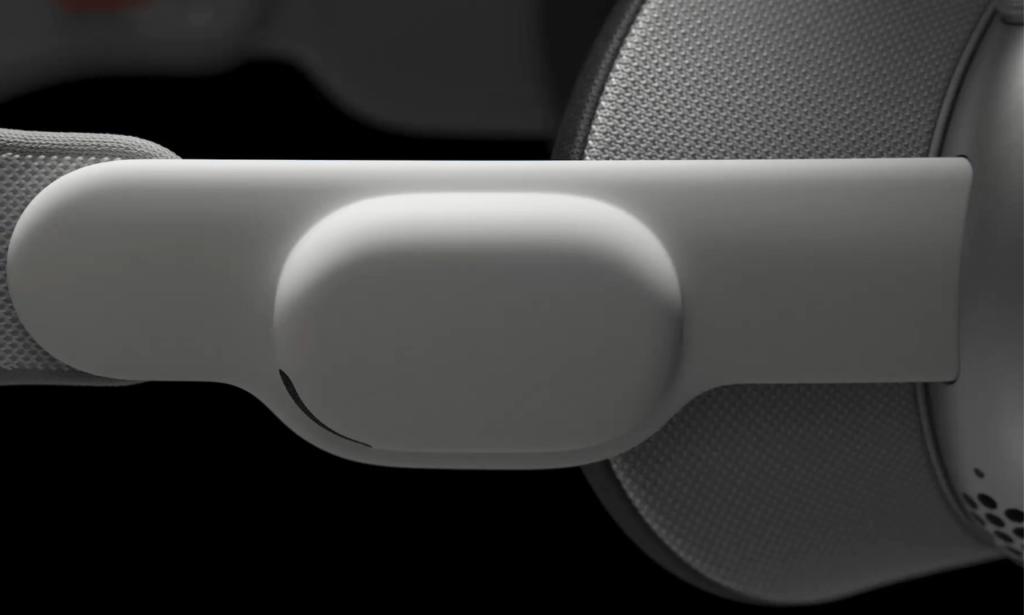
I then customized my Light Seal, which lies between your eyes and the headset, with a quick Face ID-like scan using an iPhone. Apple will make several sizes available. This Light Seal was not only comfortable, but there was also no light leaking during my demonstration. The spatial audio experience is provided by two audio pods on either side of your head, which are likewise tuned to your ears using the same scan as when wearing AirPods.
The Vision Pro’s flexible headband is also rather comfortable, with an easy-to-use dial for adjustment that has a pleasing click. The top right side of the headset features a Digital Crown that allows you to adjust the immersion level, while the left side contains a content capture button. Pressing the Crown will take you back home at any time.
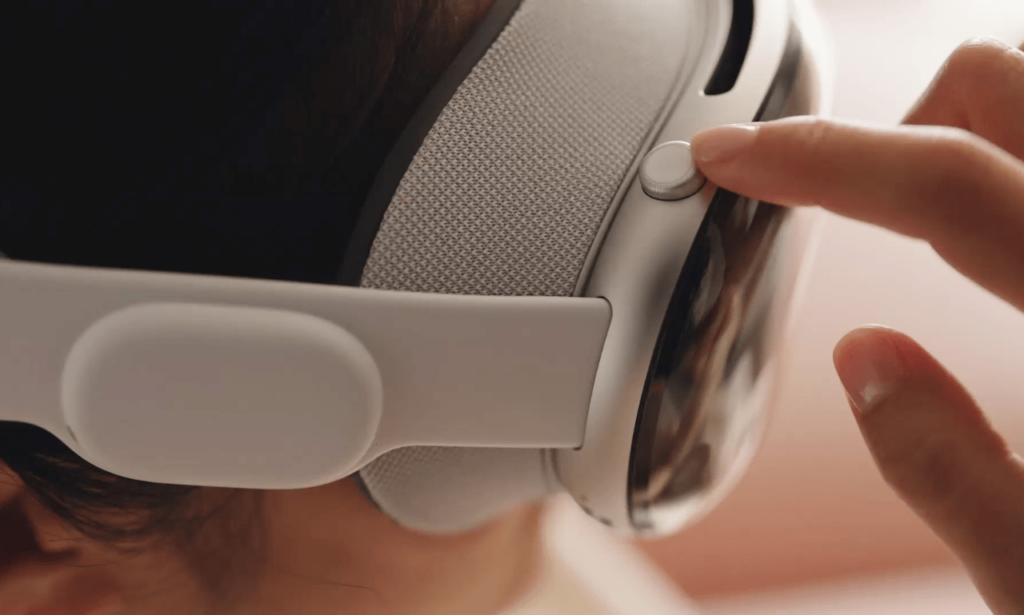
So far, so good, however there are a few concerns here. For starters, the Vision Pro must be connected to an external battery, which means a wire will have to be routed from your head to the battery in your pocket. And, while the headset is lightweight, I wouldn’t call it compact; we’re a long way from elegant Apple glasses.
First ever real useful use case for Apple’s Vision Propic.twitter.com/NvnC26paAz
— Barsee 🐶 (@heyBarsee) January 24, 2024
Apple Vision Pro : Specs
| Apple Vision Pro | Specs |
|---|---|
| Battery life | Up to two hours. |
| Weight | 650 g |
| Capacity | 256GB, 512GB, and 1TB. |
| Chips | M2 & R1 |
| Price | $3499 |
Apple Vision Pro : Getting work done
The Vision Pro includes a number of built-in applications, including Photos, Notes, Safari, Messages, Settings, Keynote, Music, TV, Mail, Freeform, Mindfulness, and so on. Each app’s window floats in its own six-foot-tall “panel” approximately eight feet in front of you. You may resize each one, move it around, and drag it closer or away.
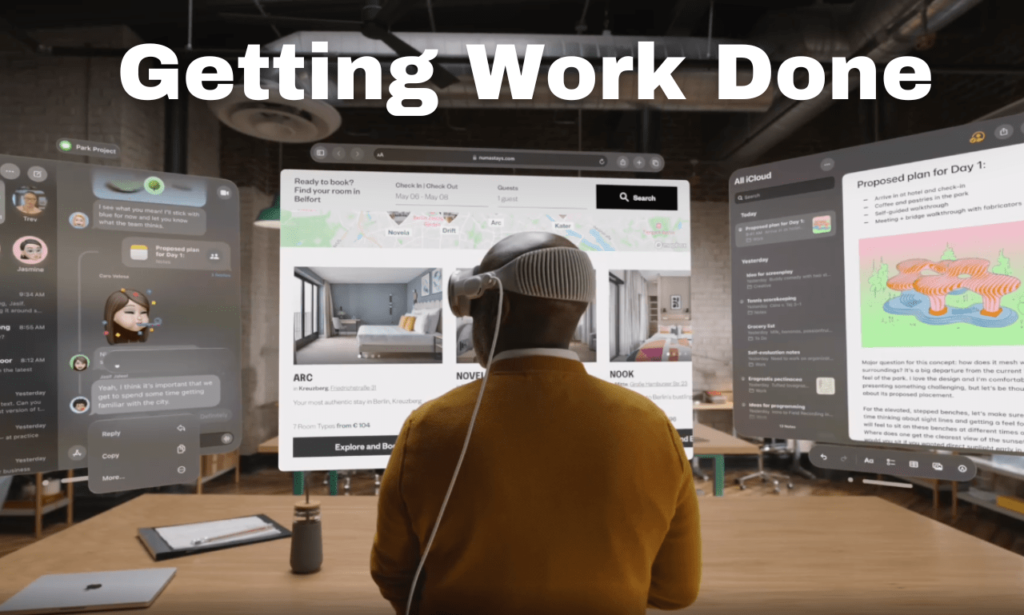
Web sites and messages appear fantastic at 10 feet diagonal. Still, working on documents is the weakest justification for an AR/VR headset. Movies, concerts, games, video calls, and live sports broadcasts—I understand. Giant, life-sized representations make a dramatic difference. But what about Microsoft Word and Notes? A large monitor seemed to be fine.
Apple Vision Pro: 3D pictures and videos
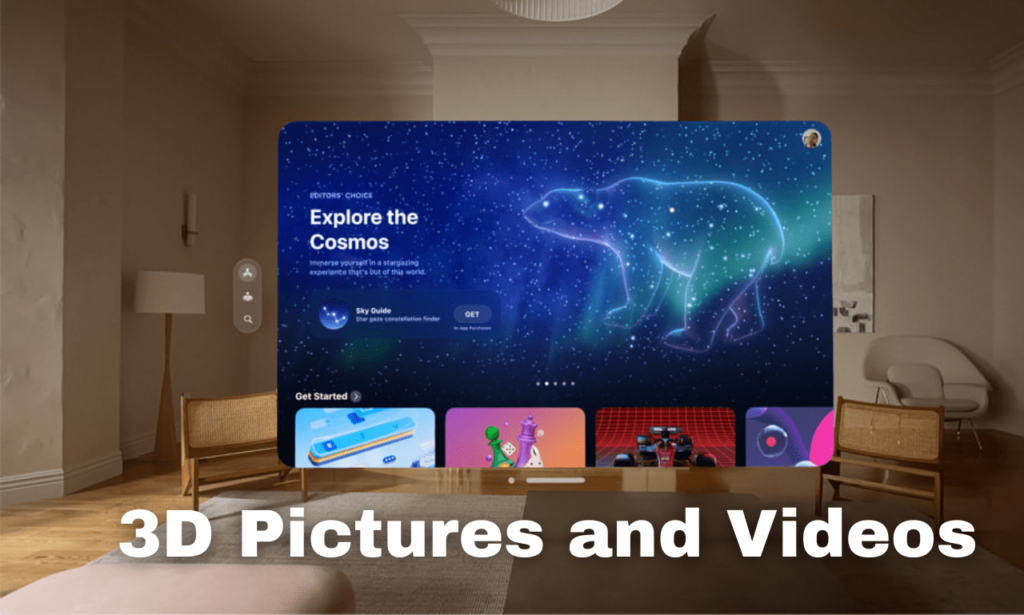
When this headset takes a picture or video, it uses two cameras placed apart to produce 3-D images and movies. Suddenly, your child’s birthday celebration appears as dimensional and cool as a James Cameron blockbuster, sans the blue aliens.
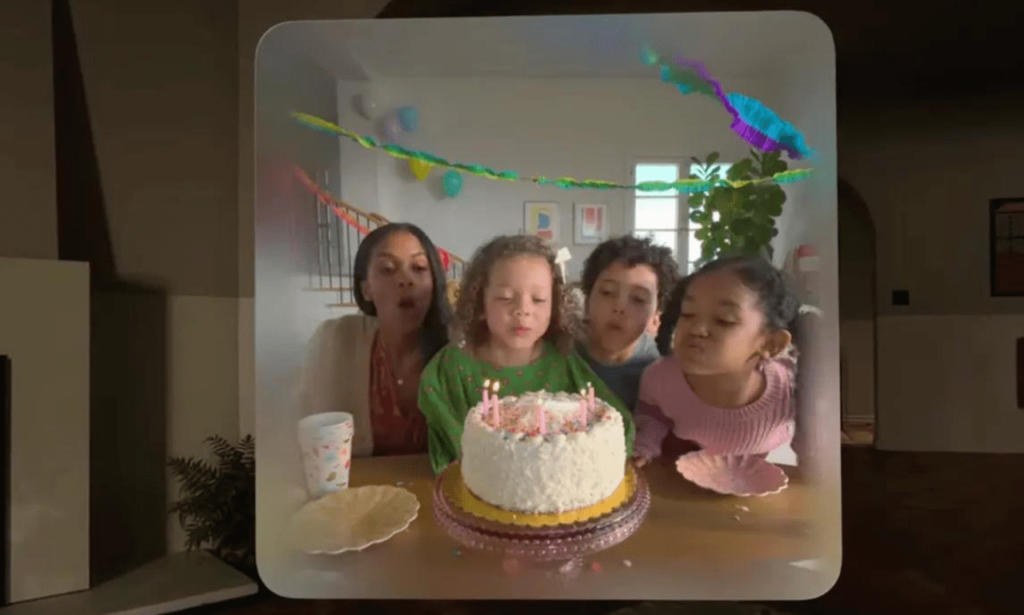
For some reason, the images are square, and seeing your own life reflected as lifelike 3-D dioramas will take some adjustment.
Apple Vision Pro : Photos

It’s similar to the photos app on the iPhone or Mac, with the exception that the pictures can be huge. Wall-sized. And when you open a panorama photo—oh my God. It can wrap around you and obscure three of the room’s walls. That mountain, building lobby, and vista are now life-sized. Who knew that for all these years, we’ve been capturing panorama images with our iPhones, unknowingly waiting for a $3,500 device to properly examine them?
Apple Vision Pro : A low battery life.
The Vision Pro’s battery life also runs out after only two hours, requiring you to reconnect it to an outlet. That may be expected given that its competitor, Meta Quest 3, has a similar two-hour run time, but it’s a bit restricting if you’re doing anything that takes you to leave your outlet or laptop. Still, if you’re using this for work (more on that below) and staying stationary, you could just leave it plugged in without much inconvenience, as it charges via USB-C and connects directly to your laptop.
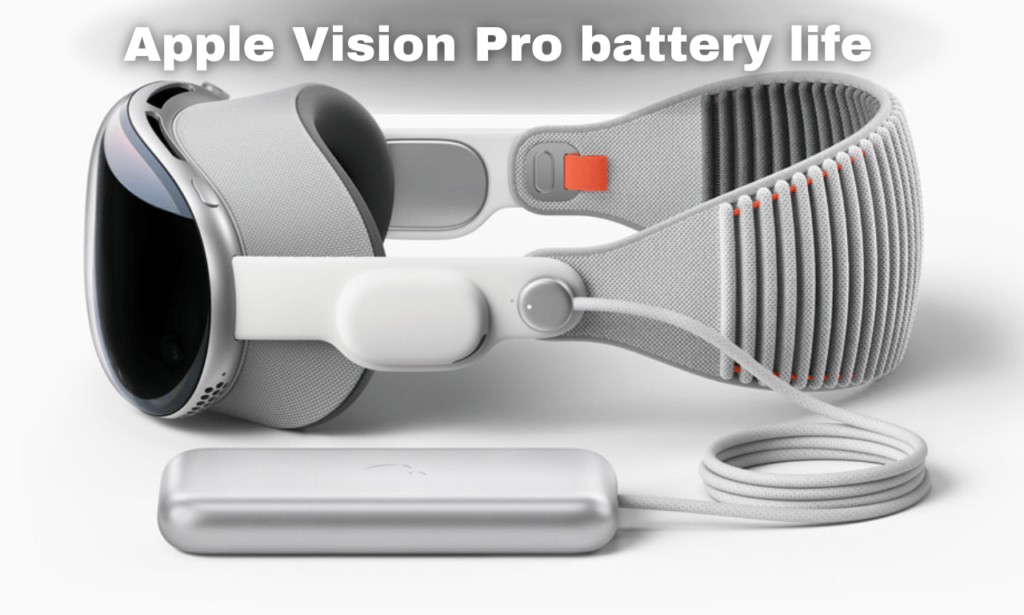
The battery pack hangs from a cord attached to the headset, which is generally not a big concern but is still a touch awkward for an Apple product. I kept it in my pocket to keep it out of the way, but there were a few times when the wire looped around my arm and delayed my motions.
Can you use Apple Vision Pro while wearing glasses?
You cannot use Apple Vision Pro when wearing glasses.
How long will the Apple Vision Pro battery last?
Up to two hours of general use and two and a half hours of video playback.
What apps will be available on Apple Vision Pro?
Disney+, ESPN, Discovery+, Amazon Prime Video, Paramount+, Peacock, TikTok, and a many more.
When was Apple Vision Pro released?
Apple Vision Pro is set to go on sale on February 2nd.
